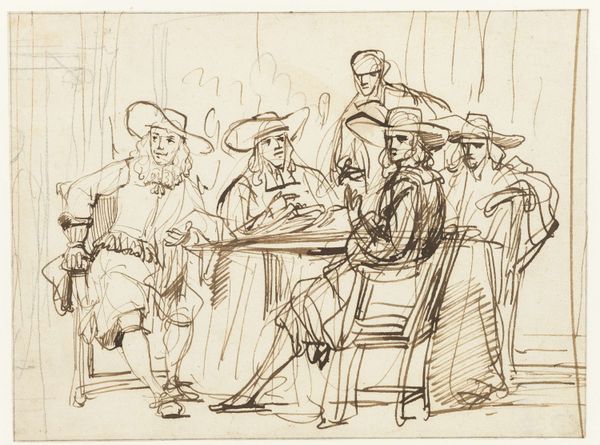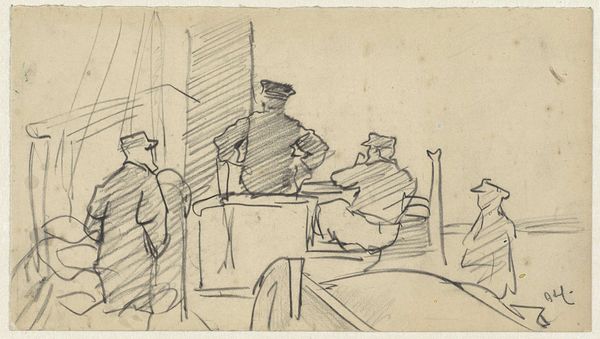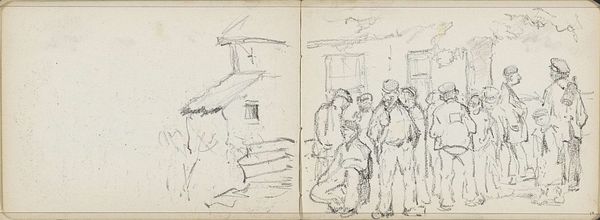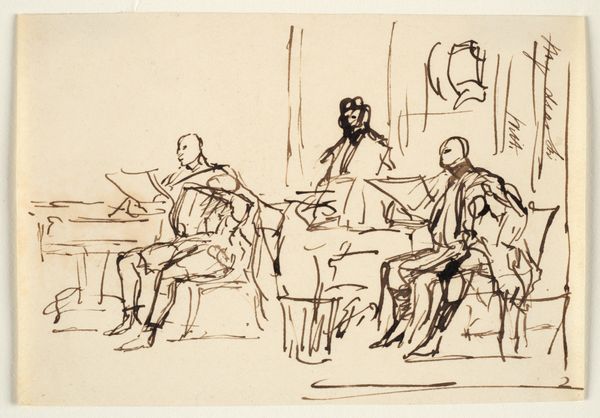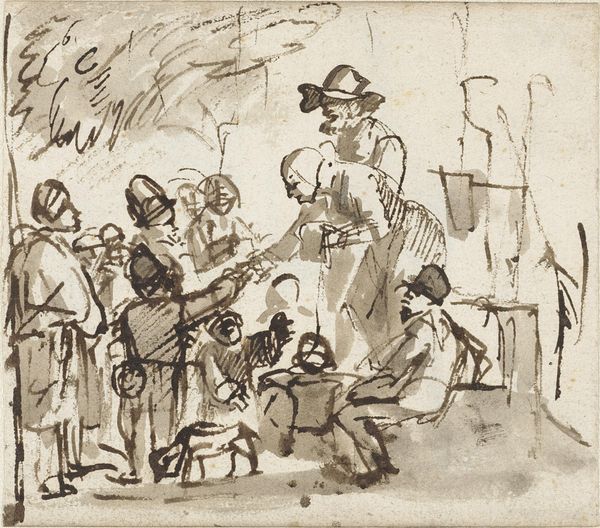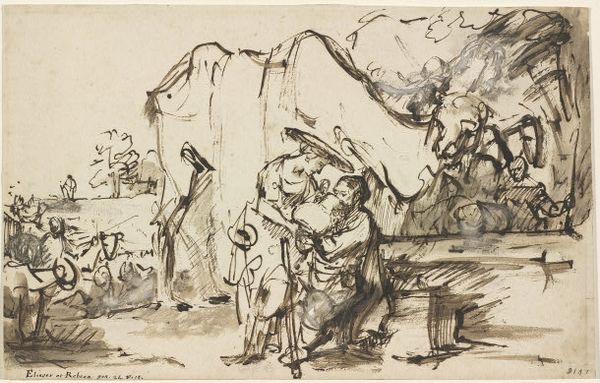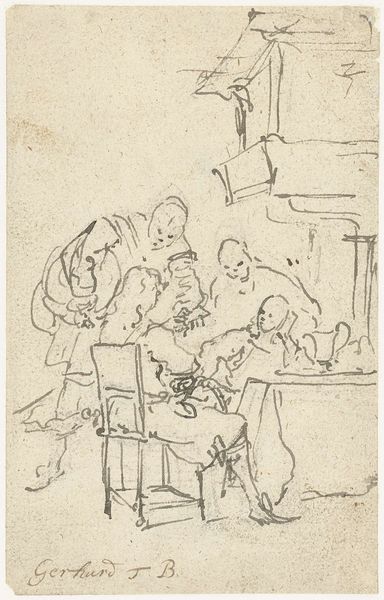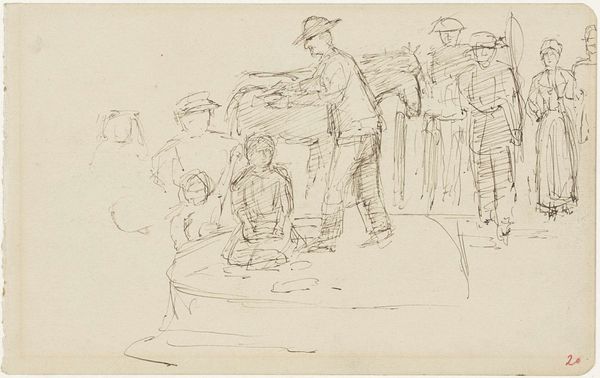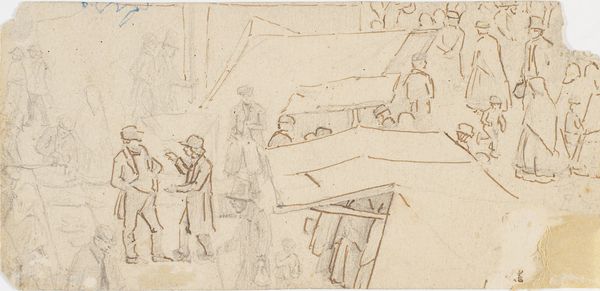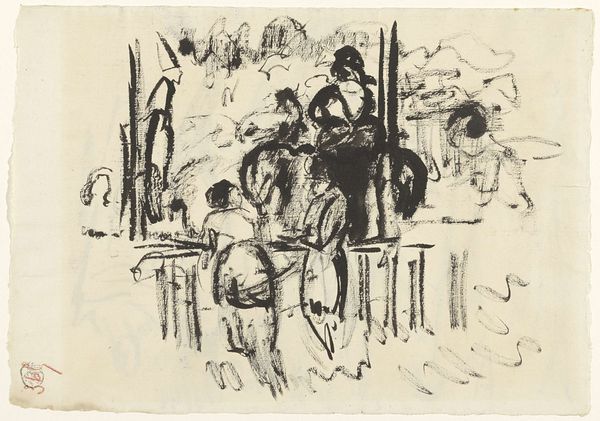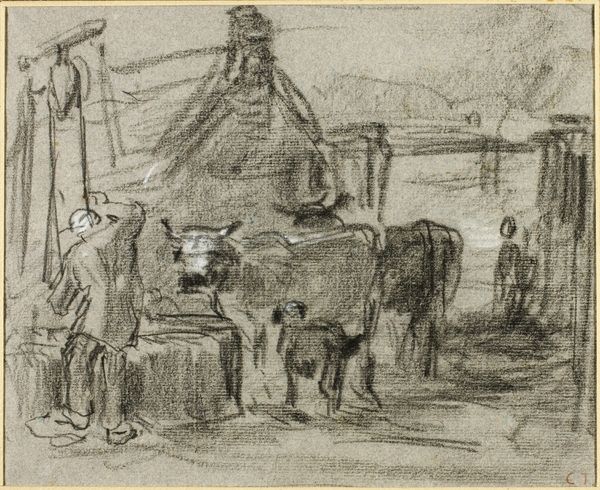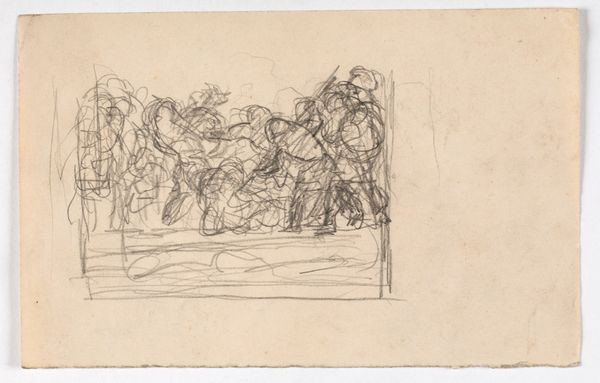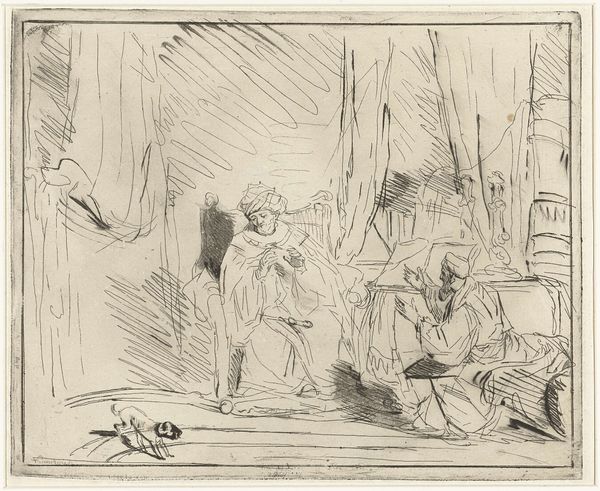
drawing, ink, pen
#
portrait
#
drawing
#
narrative-art
#
baroque
#
pen sketch
#
figuration
#
ink
#
pen
#
history-painting
Dimensions: height 156 mm, width 201 mm
Copyright: Rijks Museum: Open Domain
Curator: Rembrandt van Rijn's drawing, "The Entombment, over a Sketch of an Executioner," created around 1640-1641 and held here at the Rijksmuseum, is a compelling work in ink and pen. The scene depicts Christ being laid in his tomb, but what immediately grabs my attention is the intensity of the linework, particularly given that it’s a preparatory sketch. Editor: Yes, that ink just *swirls*. The emotion feels raw, unpolished. Almost violently expressive, right? There's a real weight in the hunched figures around the body, an oppressive sense of grief rendered through these rapid, almost frantic lines. It's the visual equivalent of a choked sob. Curator: Absolutely. This connects to the historical context, as well. Rembrandt was known for imbuing biblical scenes with a relatable, human drama. Unlike idealized portrayals, this Entombment feels grounded. Notice the almost casual nature of some of the figures; grief isn't always performative. Editor: And did you say there's a sketch of an executioner underneath? Knowing that layers another dimension – like a shadow looming over the tenderness of the moment. It highlights the brutal reality of the crucifixion and sets the tone. Rembrandt isn’t just depicting death but injustice and state-sponsored violence. It adds some bitter irony, like a funeral dirge played on a kazoo. Curator: Precisely. Art historically, it reveals something of Rembrandt’s process, using old materials and paper in the pursuit of new insights. This reusing could tell stories about access to materials and the importance of getting those creative sparks down on paper, without inhibition. Editor: It makes me wonder if this was intentional, though. If he meant for the specter of violence to subtly taint this moment of mourning. It certainly challenges the viewer, making you confront not just the death of Christ, but the system that facilitated it. He’s saying death comes to us all, saints and sinners. Morbid, yes, but darkly profound. Curator: It certainly allows for this multilayered understanding of not only a biblical event, but also provides context for our understanding of death, public life, and political power during Rembrandt’s period. Editor: For me, it’s more intimate than that: an artist wrestling with profound themes and just, capturing the emotional truth. It reminds me to make use of the past, embrace the messy realities and always scratch beneath the surface.
Comments
No comments
Be the first to comment and join the conversation on the ultimate creative platform.
